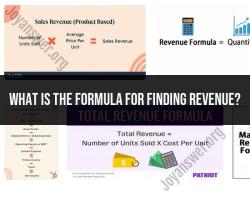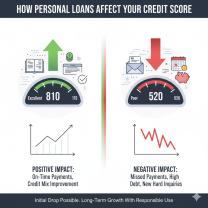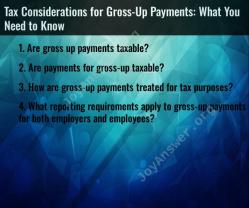What are the components of financial strategy?
A financial strategy is a comprehensive plan that outlines how an individual or organization will manage their finances to achieve specific financial goals. It consists of various components that work together to create a strong financial plan. Here are the key components of a financial strategy:
Financial Goals:
- Clearly defined financial goals provide direction for your strategy. These goals can include short-term objectives (e.g., paying off debt), medium-term goals (e.g., buying a home), and long-term goals (e.g., retirement planning).
Income Management:
- Analyze your sources of income, such as salary, business revenue, investments, and rental income. Your strategy should include a plan for increasing income through raises, promotions, side businesses, or investment returns.
Expense Management:
- Create a budget to track and manage your expenses. Categorize expenses as fixed (e.g., rent, mortgage) and variable (e.g., groceries, entertainment). Identify areas where you can reduce spending.
Debt Management:
- If you have debt, formulate a strategy to pay it down efficiently. Prioritize high-interest debts and consider consolidation or refinancing options.
Savings and Investments:
- Determine how much you can save or invest regularly. Consider contributing to retirement accounts (e.g., 401(k), IRA), building an emergency fund, and exploring investment options (e.g., stocks, bonds, real estate).
Risk Management:
- Assess and manage financial risks by having appropriate insurance coverage, including health, life, disability, and property insurance. Your strategy should also address risk tolerance and investment diversification.
Tax Planning:
- Develop tax-efficient strategies to minimize your tax liability. This may involve utilizing tax-advantaged accounts, taking advantage of tax credits, and making informed decisions regarding investments.
Retirement Planning:
- Create a retirement plan that estimates your retirement needs and outlines a savings strategy to achieve those needs. Consider factors like the age at which you plan to retire and the lifestyle you desire in retirement.
Estate Planning:
- Plan for the distribution of your assets after your passing. This includes creating a will, naming beneficiaries for accounts, and establishing trusts or other estate planning tools.
Financial Security and Emergency Preparedness:
- Build a financial safety net by maintaining an emergency fund that covers at least three to six months' worth of living expenses. Prepare for unexpected financial challenges.
Investment Strategy:
- Develop an investment strategy that aligns with your financial goals, risk tolerance, and time horizon. Diversify your investments across different asset classes and periodically rebalance your portfolio.
Monitoring and Review:
- Regularly review and assess the progress of your financial strategy. Make adjustments as needed to stay on track and adapt to changing circumstances.
Professional Guidance:
- Consider consulting with financial advisors, tax professionals, or estate planning attorneys to get expert advice and ensure your strategy is well-informed and optimized.
Education and Knowledge Building:
- Continuously educate yourself about personal finance and investment options. Being informed empowers you to make better financial decisions.
Risk Tolerance and Psychology:
- Understand your risk tolerance and how it affects your financial decisions. Recognize behavioral biases that may influence your financial behavior.
Long-Term Perspective:
- Maintain a long-term perspective when making financial decisions. Avoid reacting to short-term market fluctuations and focus on your overall financial goals.
A well-crafted financial strategy integrates these components to create a holistic plan that aligns with your financial aspirations and helps you navigate the complexities of personal finance. Your strategy should be flexible, adaptable, and designed to evolve as your life circumstances change.
Deconstructing Financial Strategy: Key Components and Elements
Financial strategy is a blueprint for achieving your financial goals. It is a comprehensive approach to managing your money that takes into account your current financial situation, your future goals, and your risk tolerance.
Here are some of the key components of a financial strategy:
- Goals: What do you want to achieve with your money? Do you want to retire early, save for a down payment on a house, or start a business? Once you know your goals, you can start to develop a strategy to achieve them.
- Risk tolerance: How much risk are you comfortable with? This will help you to determine the types of investments that are right for you.
- Budget: A budget is a plan for spending your money. It can help you to track your income and expenses and to make sure that you are living within your means.
- Investments: Investments are a way to grow your money over time. There are a variety of investment options available, so it is important to do your research and to choose investments that are right for you.
- Insurance: Insurance can help to protect your assets from unexpected events, such as accidents, illnesses, and property damage.
- Retirement planning: If you are saving for retirement, you will need to develop a retirement plan. This plan should take into account your income needs in retirement, your life expectancy, and your savings goals.
- Estate planning: Estate planning is the process of planning for the distribution of your assets after you die. This includes creating a will and trust.
Building a Strong Financial Framework: Components of Strategy
When building a financial strategy, it is important to consider all of the components listed above. A well-rounded financial strategy will take into account all of your financial needs and goals.
Here are some tips for building a strong financial framework:
- Start early. The earlier you start planning for your financial future, the more time your money has to grow.
- Get professional help. If you need help with financial planning, consider working with a financial advisor. A financial advisor can help you to create and implement a financial plan that is tailored to your individual needs.
- Review and update your financial plan regularly. Your financial situation and your goals may change over time, so it is important to review and update your financial plan regularly.
The Blueprint for Financial Success: Understanding Strategy Components
By understanding the key components of financial strategy, you can develop a blueprint for financial success. A well-rounded financial strategy will help you to achieve your financial goals and to live a financially secure future.
Here are some additional tips for understanding strategy components:
- Make sure your goals are realistic and achievable. Don't set goals that are too ambitious or too easy.
- Be specific when setting your goals. The more specific you are, the easier it will be to develop a plan to achieve them.
- Prioritize your goals. Not all goals are created equal. Decide which goals are most important to you and focus on those ones first.
- Be flexible. Your financial situation and your goals may change over time, so be prepared to adjust your strategy as needed.
By following these tips, you can develop a financial strategy that will help you to achieve your financial goals and to live a financially secure future.













